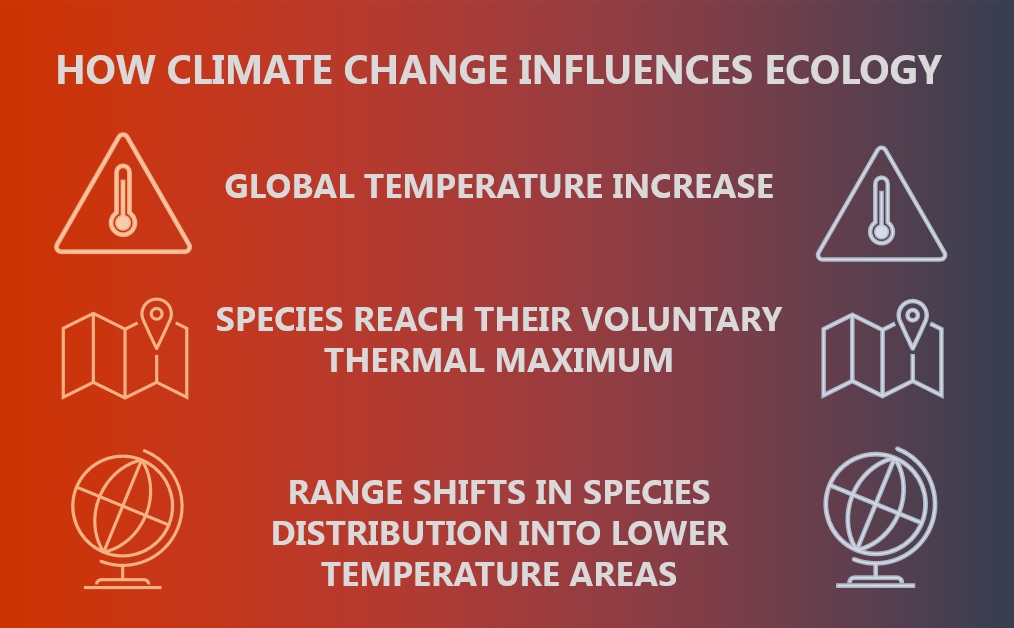
The thermal tolerance of various species (such as insects, mammals, birds, and reptiles) is vital for understanding the impacts of climate change. With global temperatures continually rising; it is important to support the species under the current highest threat, and to predict how species will react to climate changes in the future. With detailed information, we will be able to assess changes in biodiversity levels and species range distribution shifts in geographic areas.
There are three main aspects of investigating thermal tolerance, which are:
- The species
- We are able to compare the voluntary and critical thermal maximum of different species, and their level of tolerance to climate change. For example, zygentomas may be less affected by temperature changes than bees.
- The location
- We can assess how the atmospheric temperature of a geographic location may influence biodiversity levels in the future. We can identify areas with a lower temperature that may experience a biodiversity increase. These areas may be used as a refuge for taxon that reach their voluntary thermal maximum. In comparison, areas with a higher temperature may experience biodiversity loss as taxon avoid unfavourable conditions.
- The thermal maximum
- This is categorised in two ways. The voluntary thermal maximum is the temperature that an animal can tolerate without mortality (and travel into a refuge), and the critical thermal maximum is the temperature that is fatal to animals, at which they die. Data for voluntary thermal maximum may indicate a point in time where biodiversity levels will change in an area.




Comentarios recientes